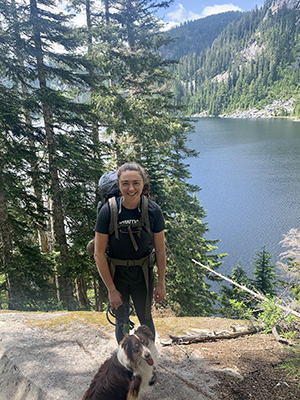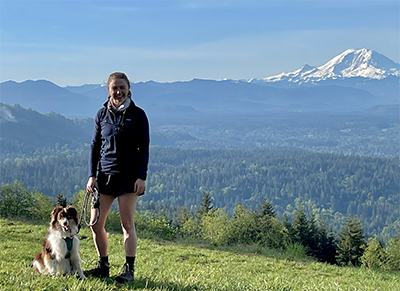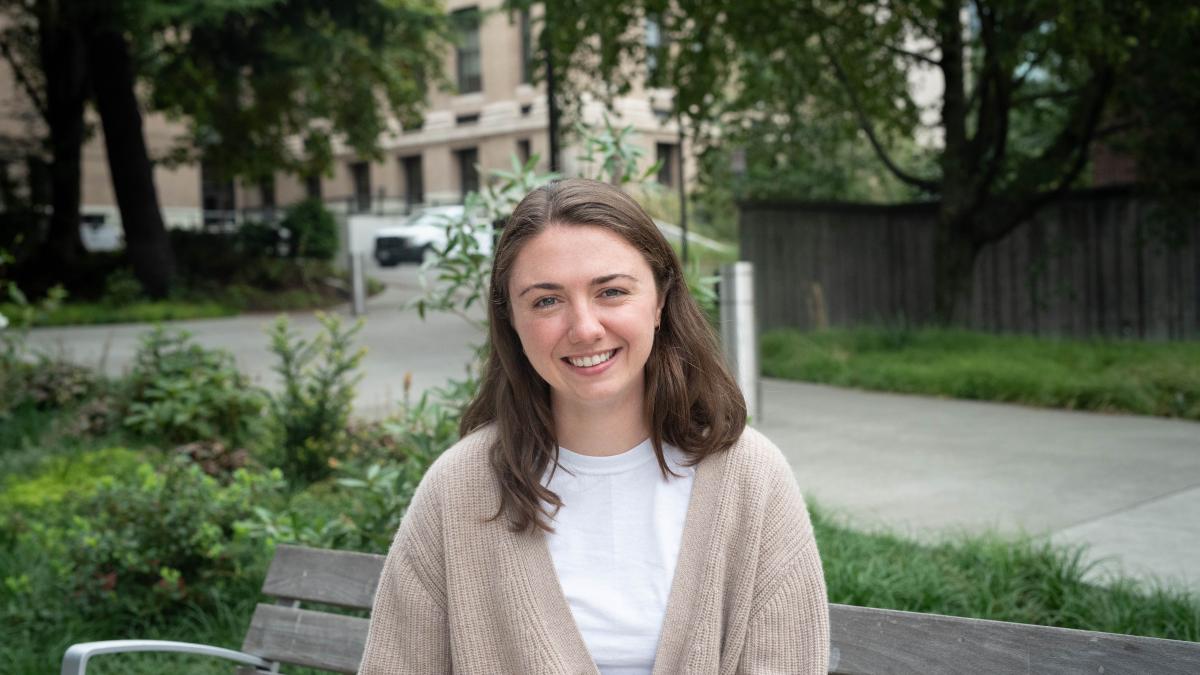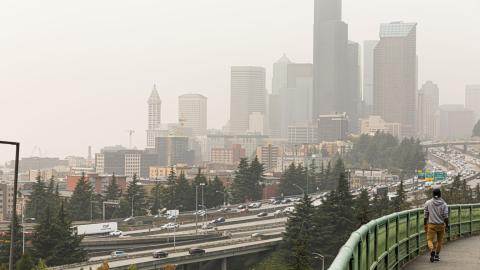Claire Schollaert, PhD student in the UW Department of Environmental & Occupational Health Sciences (DEOHS), is one of two recipients of this year’s Russell L. Castner Endowed Student Research Fund, which supports student research in environmental health. We recently spoke with Schollaert about her love of “solutions-driven, action-oriented” research, her PhD work on wildfire smoke and her internship with the US Forest Service.
Claire Schollaert
PhD, Environmental & Occupational Hygiene
Hometown
Walnut Creek, CA
Future plans
A career as an environmental health scientist in academia, government or the nonprofit sector
“I have a very interdisciplinary dissertation committee, and it was all facilitated by our department's focus on this holistic approach to climate impacts and other exposures.”
- Claire Schollaert
How did you get interested in environmental health?
I studied anthropology and biology as an undergraduate, with a focus on ecology, conservation and restoration. After college, I got a job at Boston University in the environmental health department doing research related to urban and indoor sources of air pollution.
I didn't know that much about environmental health before starting that job, but I found myself loving it because it was so solutions-driven and action-oriented. I found it satisfying to work on research projects that were in direct response to community-generated questions related to environmental exposures.
It was clear to me how our research and results were directly translating into either policy changes or interventions that were making on-the-ground differences. I was excited to stay in environmental health after that, which was why I ended up getting a master's in it and then pursuing a PhD.
How did you choose to do a PhD at DEOHS?
I was drawn to our department and the UW in general because I was interested in climate-related impacts on health, and also interdisciplinary work linking land management and atmospheric science and other climate-related work to the public health field.
UW is great for those sorts of interdisciplinary connections. Since my first year, I've taken courses outside of the department and made connections with faculty working on related things but with different perspectives on similar topics. I have a very interdisciplinary dissertation committee, and it was all facilitated by our department's focus on this holistic approach to climate impacts and other exposures.
What is the focus of your PhD research?
I am interested in both wildfire and forest management impacts on air quality, particularly in vulnerable communities. There's a scientific consensus among the forest management community that prescribed burning is one of the most efficient ways to reduce extreme wildfire risk. This has a lot of benefits, including reducing people’s exposure to wildfire smoke.
But despite this, there have been limited amounts of prescribed burning applied to the landscape, particularly across the West. One reason for that is because of air quality concerns, and because we have a limited understanding of how smoke-related exposures from prescribed burns compare to those from wildfire smoke.
My work is motivated by the need to address that knowledge gap, with the hope that having more data will help better inform where we apply prescribed burns, so we can protect communities while still reducing extreme wildfire risk.
What will you use your Castner Award for?
I’m working on a historical exposure assessment of exposures to wildfire smoke and prescribed burn smoke across Washington, Oregon and California. To do this, I take an inventory of biomass burning emissions from satellite data, and distinguish between emission sources that stem from wildfires and those from prescribed burning. Then I put the data into a chemical transport model that requires a lot of computing power to show where particles are going downwind, so we can predict exposure patterns for each of those smoke types.

In the process of doing this, our team discovered a source that wasn’t fitting within our wildfire and prescribed burn classification: we suspect it was from agricultural burning. A lot of growers burn fields after the harvest, to get ready for new planting. We think it’s a pretty significant source of smoke when compared to prescribed burns, at least across Washington, Oregon and California.
We were eager, once we discovered this, to run the agricultural burn emissions data through the dispersion model as well to get exposure data. So we're using the Castner funds to pay for that computing time.
What are some of your results so far?
Wildfire smoke is the dominant concern for smoke exposures in this region. Despite that, we weren't anticipating agricultural burns to be such a significant source of emissions.
The timing of these smoke exposures is quite different: Agricultural burns and prescribed burns dominate in the late fall, winter and early spring, whereas wildfire smoke dominates in summer.
We're also seeing some differences in the frequency and duration of these exposures. In extreme wildfire smoke events, there can be high-level exposures that often last a day or two, whereas prescribed smoke exposures may be lower in severity, but there are more repeated exposures throughout a prescribed burn season. We have yet to figure out the implications of this for health outcomes.
What has your experience been working with faculty?

It’s been wonderful to work with both of my advisers, DEOHS Associate Professor June Spector and Associate Teaching Professor Tania Busch Isaksen. They're often thinking about these wildfire smoke questions from different perspectives than I usually am.
I also worked with DEOHS Assistant Teaching Professor Edward Kasner and others to test the use of low-cost air quality sensors in central Washington to help protect farmers from wildfire smoke.
My dissertation committee also includes faculty from UW Atmospheric Sciences, the UW Evans School and University of California Los Angeles, so it’s been great to get all those different viewpoints.
What are your goals for after graduation?
When I came to the UW, I was set on staying in academia after my program. That option is still on the table, but I've also started to explore nonacademic career paths with regulatory agencies or nonprofits.
I recently started an internship with the US Forest Service Air Resource Management Program to get a better sense of air quality and wildfire smoke work at a regulatory agency. I’m hoping to develop some interactive online mapping tools to help the agency and the communities they serve visualize smoke from wildfires and prescribed burns.
Schollaert received funding from the SNAPP Project, the UW Population Health Initiative and the Castner Award.




